The first machine of mankind, the loom is a symbol of creativity and essential to the manufacture of rugs.
Blog categories
Search in blog
Latest posts
-
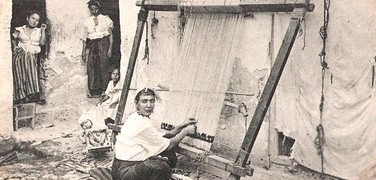 The loom: humanity's first machineRead more
The loom: humanity's first machineRead more -
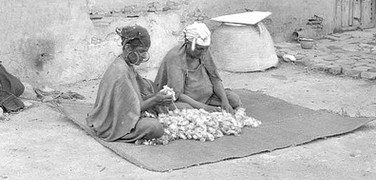 Preparing the wool13/11/2021Posted in: HandicraftRead more
Preparing the wool13/11/2021Posted in: HandicraftRead moreMany craftswomen still do all the work by hand, from shearing the wool to weaving, sorting the wool, cleaning,...
-
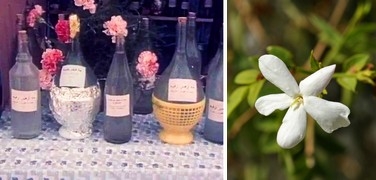 Floral waters / hydrolats in Tunisia: distillation and virtues29/01/2021Posted in: HandicraftRead more
Floral waters / hydrolats in Tunisia: distillation and virtues29/01/2021Posted in: HandicraftRead moreDiscovery of the artisanal method of distilling floral waters and their virtues.
-
 Arabic words in the French language13/01/2021Posted in: CultureRead more
Arabic words in the French language13/01/2021Posted in: CultureRead moreDid you know that there are five to eight more Arabic words than Gallic words in the French language? The Arabic...
-
 Reviving the Tunisian carpet craftswomanship14/12/2020Posted in: HandicraftRead more
Reviving the Tunisian carpet craftswomanship14/12/2020Posted in: HandicraftRead moreHow to revive the Tunisian carpet craft? A few lines of thought and an overview of the initiatives set up.

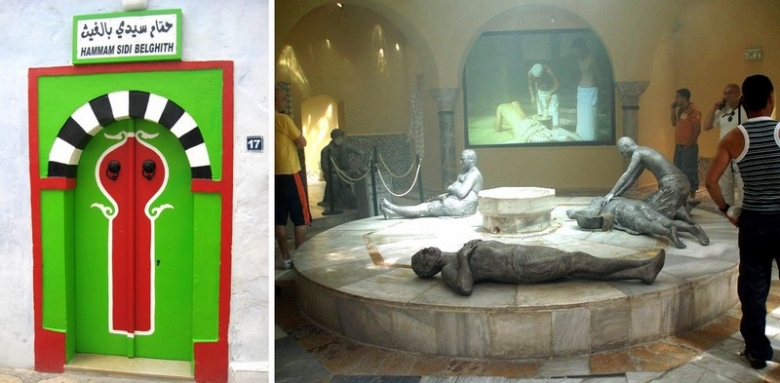
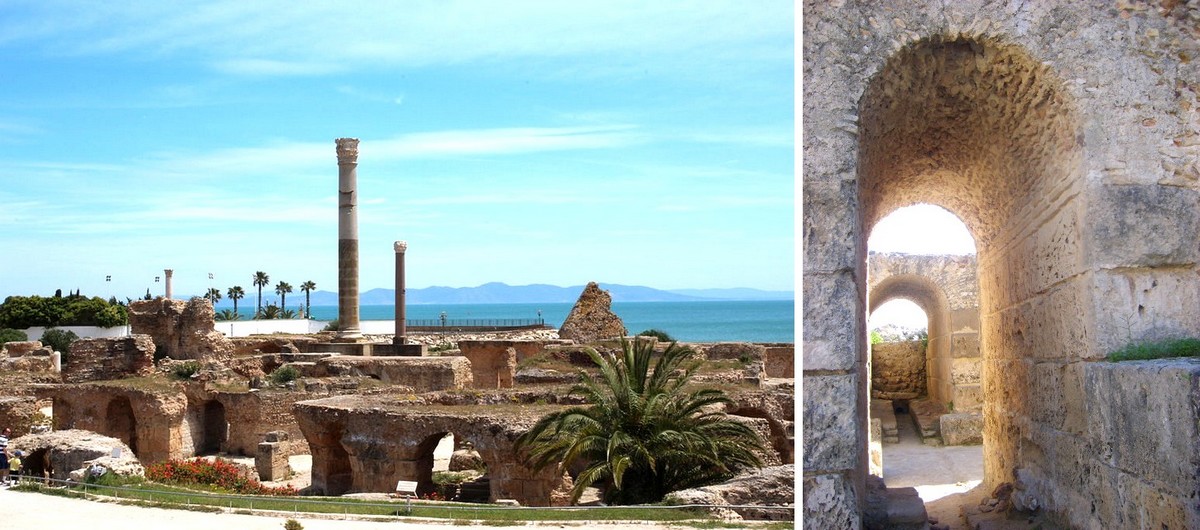
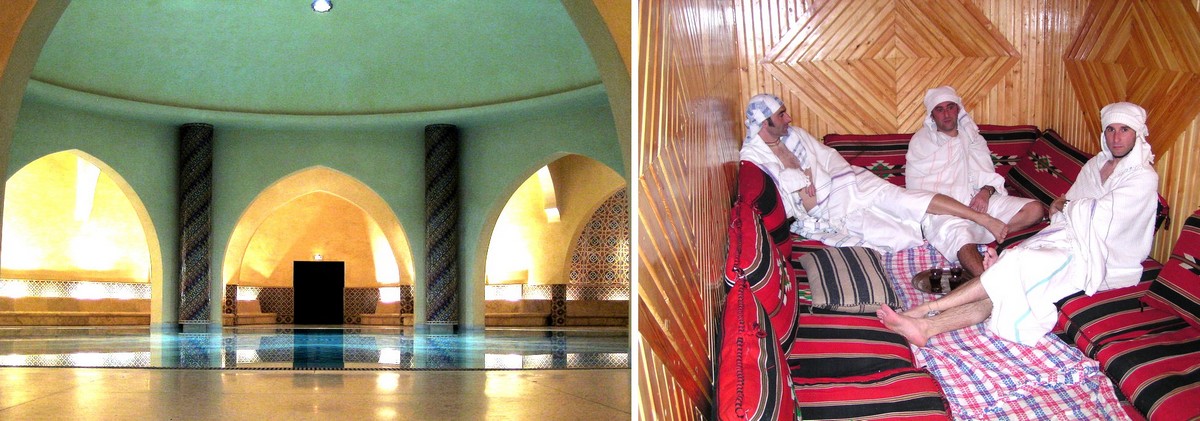




Leave a comment
Comments
Hammam de Tunis
By: Letaief Sana On 24/10/2021Les hammams de la Tunisie et du Maroc n'ont rien à voir avec les bains turcs... Il sont plutôt dit bains maure
Planete Maneki
By: Planete Maneki On 02/02/2020Bonjour Aurélie, petite précision pour les lecteurs qui pourraient être intéressés, je signale que si les bains chauds mixtes existent au Japon, ils sont tout de même rares. Et effectivement on se baigne entièrement nu dans les onsen ou sento sur l'archipel nippon. On dispose généralement tout de même d'une petite serviette en carré pour se cacher les parties intimes si on est trop pudiques (mais pas toujours).
Noho
By: Noho On 11/11/2019Plus de hammam en Egypte ? Je suis surpris !
En tout cas, moi ça m'a donné envie !!
Merci
Rafik
By: Rafik On 11/11/2019Ah le hammam, un lieu de repos exceptionnel, mais après le bain rien de mieux q'une tasses de thé !!!
Célia
By: Célia On 08/11/2019L'artisanat est l'âme des cultures.
Laria
By: Laria On 10/10/2019Je n'ai jamais été au hammam mais c'est vrai que votre article me donne envie d'essayer au moins une fois.
Hugo
By: Hugo On 09/08/2019Bonjour, votre article est très bien. Cependant, je trouve dommage que vous n'ayez pas listé les bienfaits du hammam (élimine les toxines, dégage les voies respiratoires...).
Alice
By: Alice On 11/06/2019pour avoir eu l'occasion de fréquenter régulièrement un hammam ces derniers temps, je vous recommande fortement ses vertues
Estelle
By: Estelle On 21/07/2017Je me demande pourquoi les Tunisiens désertent les hammams. Est ce hors de prix à cause de l’afflux de touriste ? En tout cas pour avoir tester les bains au Japon, c’est vraiment agréable. Bon pour le Japon, il faut aimé un peu le naturisme :)
Sandrine Faume
By: Sandrine Faume On 03/07/2017J'ignorais qu'il n'y avait plus de hammams en Egypte...c'est bien dommage pour les égyptiens car cela procure tellement de bénéfices pour le corps !
Lena
By: Lena On 01/04/2019Je n'ai jamais été dans un hammam mais c'est vrai qu'il y en a de moins en moins, c'est dommage pour la culture je pense.
Desenfans
By: Desenfans On 04/03/2019Ah ben j'en apprends une belle !
Et moi qui pensait que le hammam avait surtout une vertu thérapeutique pour la santé. --'
Camille
By: Camille On 28/11/2018Bon article ! Le hammam est sans doute la meilleure façon de se relaxer et prendre soin de sa peau !
Yves
By: Yves On 21/09/2018Je ne savais pas que dans certain pays on prenait le hammam vetu d'un vêtement (fouta). Mais du coup le vêtement doit être humide, non?
histoiredo
By: Histoiredo On 14/08/2018C'est très instructif, je ne connaissais même pas toute cette histoire avec les salles progressives, ni de la fouta. C'est vrai que c'est un des équipements de bien-être les plus bénéfiques pour le corps.
Farida
By: Farida On 28/05/2018La Tunisie, mon très beau pays.... me manque beaucoup...et le Hammam aussi !
Clément André
By: Clément André On 22/05/2018Très joli voyage au pays des hammam :)
Merci c'était très instructif. Bravo à vous !
Sam
By: Sam On 11/05/2018J'ai essaye la premiere fois en séjour au Maroc, j'en suis devenu fan... Il y en a pas loin de chez moi à paris mais l'ambiance est un peu différente..
Vivement que je retourne au maroc hihihi :)
Patricia
By: Patricia On 12/01/2018SI j'avais la possibilité, j'irai une fois par semaine dans ce genre d'endroit. Malheureusement, le prix n'est pas donné et il n'y a pas d'hammam près de chez moi. dommage. Article très instructif.
Lucas
By: Lucas On 23/11/2017Étonnant c'est une particularité de l’Égypte ou d'autres pays n'en propose pas.
Il y en a partout en France même en Guadeloupe dans les Outremer, bizarre
delacroix
By: Delacroix On 12/10/2017Mauvaise nouvelle :(
Je croyais que les hammams font partie du quotidien des Egyptiens.
Charles
By: Charles On 01/09/2017Je ne connaissais pas du tout cette tradition mais elle a l'air vraiment sympa et ça doit bien détendre...
revo
By: Revo On 20/08/2017Les hammams c'est tellement génial, vivement que j'aille m'en faire un :-)
Jean-Luc
By: Jean-Luc On 17/08/2017Super intéressant ! J'ai fais une cure récemment de Hammam et ça m'a fait le plus grand bien :-)
Stef
By: Stef On 06/08/2017Il devrait y en avoir plus...c'est tellement relaxant, bon pour le corps et l'esprit!